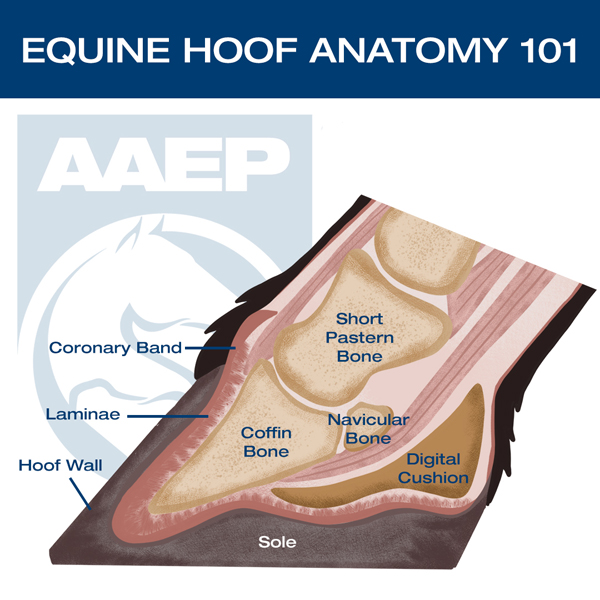Hoof Abscesses in Horses: A Natural Detox
By Kentucky Equine Research Staff
If a horse suddenly develops tenderness in a hoof, it is possible an abscess has formed. Abscesses have varying stages of severity, but they have one thing in common: they are created to flush toxins from the body.
When harmful bacteria enter a hoof through a crack, fissure, or puncture, the horse’s immune system jolts into action. White blood cells rush to the site of infection, attack the invading bacteria, and flush them out of the body. When this process takes place in the hoof, tenderness and lameness can occur because the hoof wall cannot expand to accommodate the accumulating pus. The pressure the white blood cells create can become very painful if left unrelieved.
The best way to treat abscesses is to call your veterinarian as soon as your horse starts showing tenderness, heat, or swelling in any hoof. Some abscesses will rupture on their own, but many need to be drained manually. The veterinarian will clean the hoof thoroughly and then create an opening for the pus to leave the body. If the abscess is not yet visible on the sole or bulb of the hoof, hoof testers can be used to determine its approximate location. This release of pressure will immediately relieve much of the pain the horse is experiencing.
After the abscess has drained, it must be cleaned and wrapped to prevent reintroduction of harmful bacteria. The site must be kept clean until it is healed and there is no longer a route of entry. This form of abscess treatment is usually successful and does not lead to re-abscessing in the same area.
While it is fairly simple to treat abscesses, it is best not to have them at all. As a horse owner, it is important to know the common causes of abscesses: hoof conformation imbalances, periods of drought followed by wet conditions, dirty living quarters, puncture wounds, and excessive time spent on wet or muddy footing. Avoiding these situations will eschew unnecessary abscess risks.











